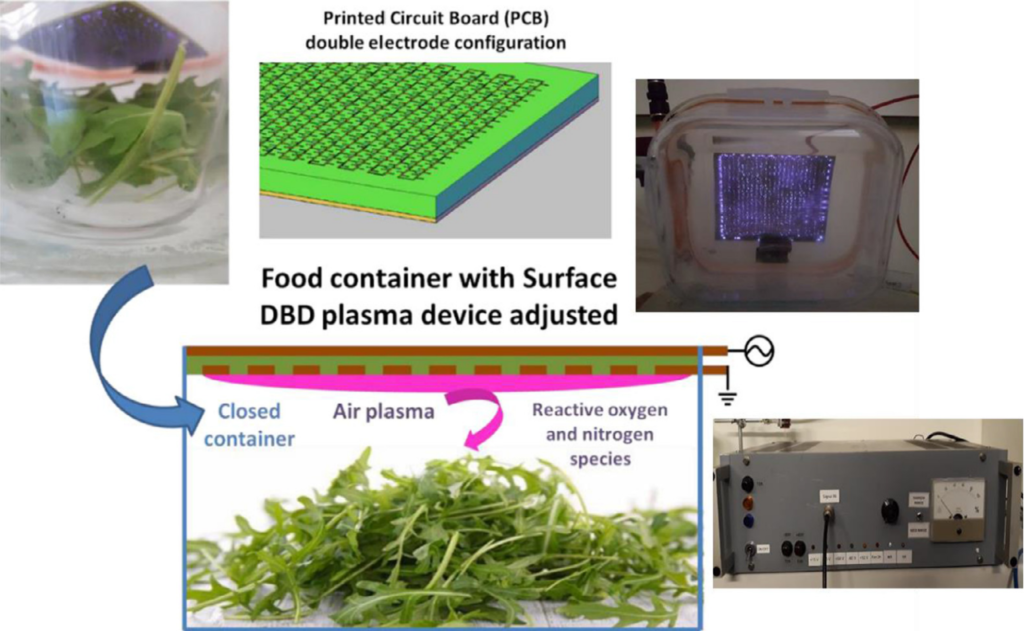Plasmas for Food, Agriculture and Medicine
Our activity on plasmas for food, agriculture, and medicine boils down to the development of atmospheric pressure plasma reactors and processes for water, fresh food, and seed treatment.
Plasma can affect all these products through radiation, electric fields, heating, with the main effect coming from the plasma produced reactive nitrogen and/or oxygen species (RONS) which induce an antibacterial effect on the surface of the products.
We have developed reactors for direct treatment of products, where the plasma produced species are in direct contact with the product (e.g., rocket leaves or maize spores) or indirect treatment, where products are immersed in “plasma activated” (i.e., water treated by plasma and enriched in RONS) water.
Highlights of this activity are the increase the shelf-life of fresh fish fillets by 50% or 2.5 days, rocket leaves by 84% or 2.2 days, and strawberries, by 39% or 3.8 days.
Besides, food products, we are currently working on plasma nitrogen fixation (N-fixation is the process converting inert N2 to a nitrogen reactive compound) to investigate new paths for green fertilization and decrease the need for Haber-Bosch N-fixation.
More details on this activity can be found in the following list of key-publications
The treatment of products, through plasma activated water (PAW), was applied in two research projects:
- Lagomeal : The project was researching for an alternative way of utilizing alien fish of the genus Lagocephalus and the production of fishmeal for use in the diet of Mediterranean farmed mariculture species. Its goals were a) the reduction of ecological problems caused by the presence of the Lagocephalus and protection of native species, b) minimizing its adverse effects on fisheries, c) the utilization of fishmeal from the catching of Lagocephalus after inactivating Tetradotoxin from its tissues, and d) reducing the pressure on marine resources for the production of fishmeal, as a key ingredient in fish feed, in the Greek mariculture sector, as an economic raw material.
- NOVISH

